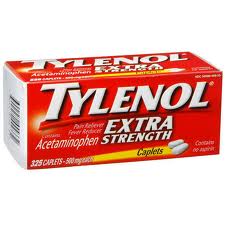 Federal health regulators are warning consumers about the risk of severe and potentially life-threatening side effects associated with acetaminophen, the active ingredient in the popular pain reliever Tylenol and other over-the-counter and prescription medications. In addition to well-documented life-threatening side effects like liver damage and liver failure requiring a transplant, patients who take Tylenol and other acetaminophen products may now also be at risk for deadly skin reactions like Stevens-Johnson syndrome. If you believe you have been adversely affected by Tylenol or another potentially dangerous pharmaceutical drug, contact our reputable attorneys at Bandas Law Firm today for legal help. You may have grounds to file a product liability lawsuit against the drug manufacturing company, in order to pursue financial compensation for your injuries and medical expenses, and our legal team can help.
Federal health regulators are warning consumers about the risk of severe and potentially life-threatening side effects associated with acetaminophen, the active ingredient in the popular pain reliever Tylenol and other over-the-counter and prescription medications. In addition to well-documented life-threatening side effects like liver damage and liver failure requiring a transplant, patients who take Tylenol and other acetaminophen products may now also be at risk for deadly skin reactions like Stevens-Johnson syndrome. If you believe you have been adversely affected by Tylenol or another potentially dangerous pharmaceutical drug, contact our reputable attorneys at Bandas Law Firm today for legal help. You may have grounds to file a product liability lawsuit against the drug manufacturing company, in order to pursue financial compensation for your injuries and medical expenses, and our legal team can help.
SJS, TEN, AGEP SIDE EFFECTS OF ACETAMINOPHEN PRODUCTS
According to a drug safety communication issued by the U.S. Food and Drug Administration (FDA) on August 1, consumers who take Tylenol and other acetaminophen-containing products may be at risk for Stevens-Johnson syndrome (SJS) or the even more deadly skin reaction known as toxic epidermal necrolysis (TEN). The agency also linked acetaminophen-containing pharmaceutical drugs to a possible risk of acute generalized exanthematous pustulosis (AGEP), a skin condition characterized by the rapid appearance of areas of red skin marked with small pustules, or fluid-filled blisters. The AGEP rash typically starts on the face or in the armpits and groin before becoming more widespread, and AGEP is fatal in approximately 5% of cases.
ADVERSE CONSEQUENCES OF SKIN REACTIONS
SJS is a severe and life-threatening skin problem typically associated with a reaction to medications, and is characterized by burns to the skin that develop from the inside out, resulting in severe rashes, blisters and possibly even causing the skin to separate from the body in sheets. When the skin lesions affect more than 30% of the patient’s body, the condition is typically referred to as TEN. Treatment for both SJS and TEN often requires inpatient care at a hospital burn unit, and the side effects can result in life-altering complications like organ failure and permanent blindness. Serious skin reactions have been reported following first-time use of acetaminophen, as well as after multiple uses, which means someone could suffer a life-threatening reaction suddenly, even if they have previously taken Tylenol or another acetaminophen-containing medication.
FDA TO REQUIRE NEW TYLENOL WARNING LABEL
The FDA discovered the link between acetaminophen and skin problems by examining medical literature and through the agency’s Adverse Event Reporting System. According to the data, there were 107 cases of severe skin reactions from 1969 to 2012, including 67 hospitalizations and 12 deaths – the majority of which involved patients taking single-ingredient acetaminophen products. In light of the potential risk of SJS, TEN and AGEP associated with Tylenol and other drugs containing acetaminophen, the FDA will require a new warning label to be added to all affected medications. “Anyone who develops a skin rash or reaction while using acetaminophen or any other pain reliever/fever reducer should stop the drug and seek medical attention right away,” the FDA warned in the drug safety communication.
Source: http://www.fda.gov/Drugs/DrugSafety/ucm363041.htm


